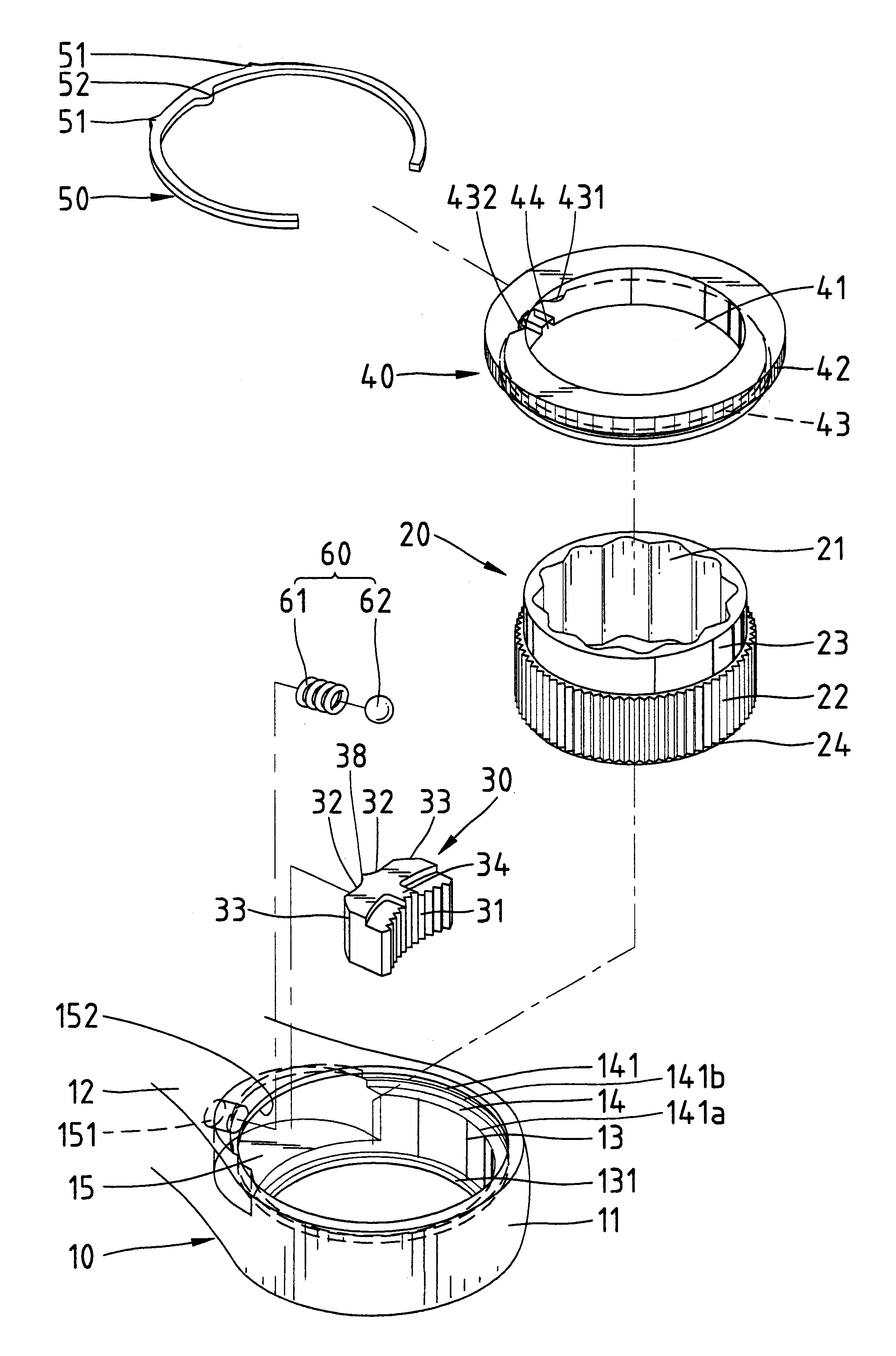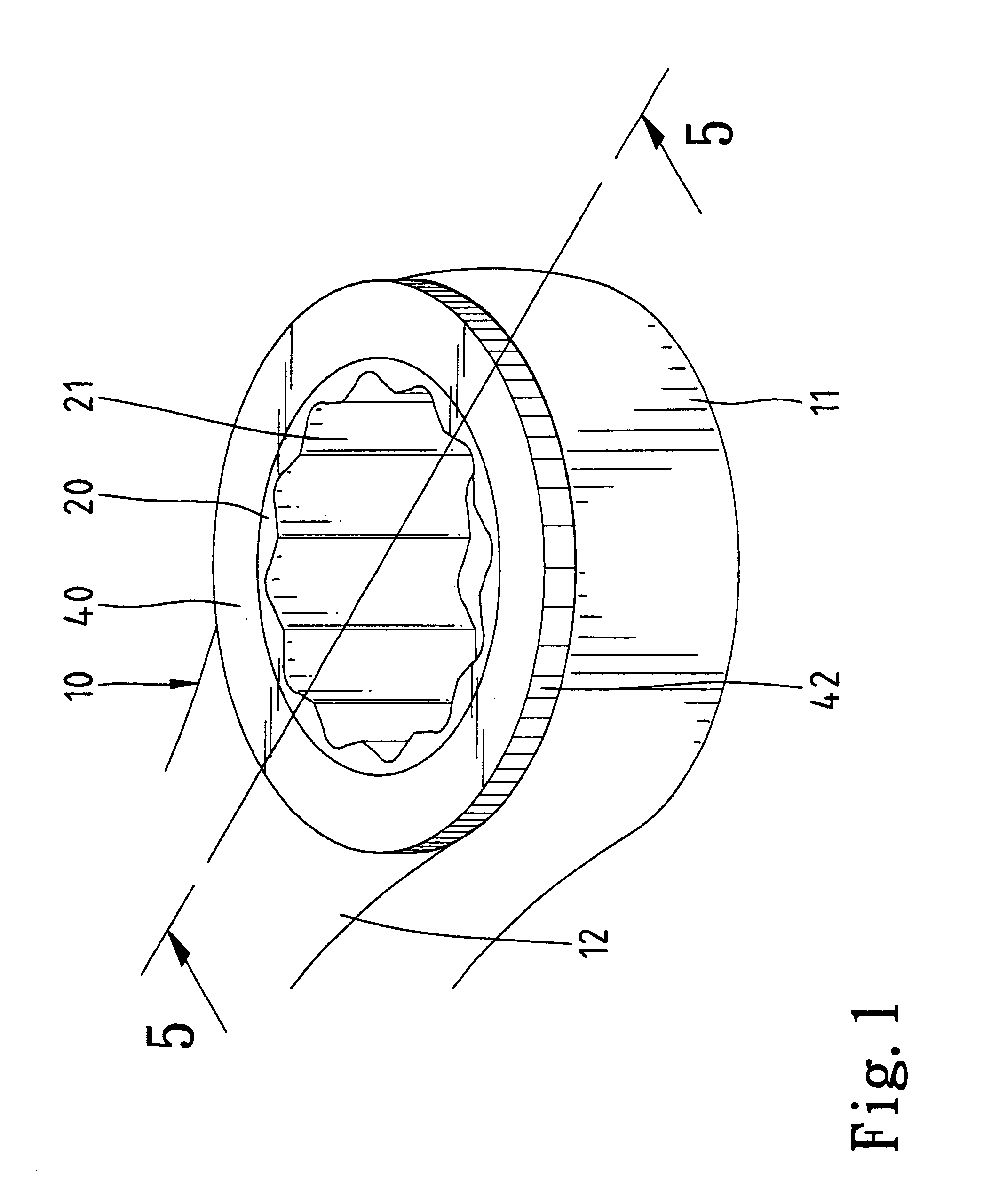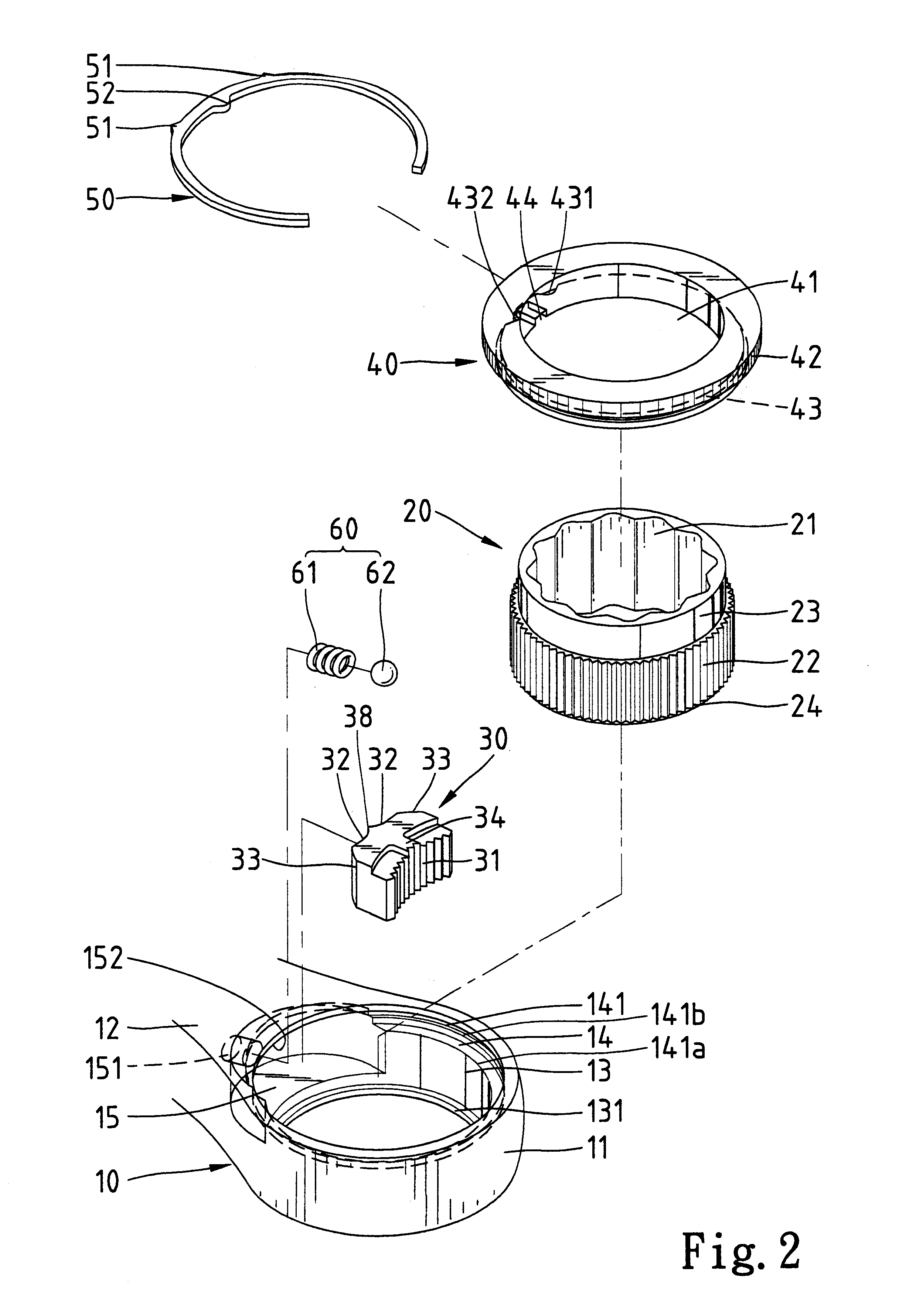Reversible ratchet-type wrench
a ratchet-type wrench and ratchet-type technology, which is applied in the direction of wrenches, manufacturing tools, spanners, etc., can solve the problems of troublesome disengagement of ring spanners, increased manufacturing cost and assembly time, and inability to operate ring spanners in reverse directions
- Summary
- Abstract
- Description
- Claims
- Application Information
AI Technical Summary
Problems solved by technology
Method used
Image
Examples
first embodiment
Referring to FIGS. 1 through 3, a ratchet-type reversible wrench in accordance with the present invention is designated by "10" and generally comprises a handle 12 and a head 11 extending from the handle 12. A hole 13 is defined in the head 11 and a stepped portion 14 is formed on an end (the upper one in FIG. 2) of a peripheral wall defining the hole 13. Preferably, the diameter of an inner section 141a of the stepped portion 14 is greater than that of an outer section 141b of the stepped portion 14 for easy installation of a switching member (e.g., a switching ring 40), which will be described later. An annular groove 141 is defined in a wall defining the outer section 141b of the stepped portion 14. A compartment 15 is defined in a peripheral wall defining the hole 13, and a cavity 151 is defined in a wall defining the compartment 15. An annular ledge 131 projects inward from the other end (the lower one in FIG. 2) of the peripheral wall defining the hole 13. Further, an end (the...
second embodiment
FIGS. 13-18 illustrate the invention, wherein like numerals denote like elements. In this embodiment, the stepped portion 152 of the compartment 15 is omitted, and the upper end of the compartment 15 is partially coincident with the stepped portion 14, best shown in FIG. 14. The protrusion 34 of the pawl 30 is located at a level lower than an upper side of the pawl 30; namely, the height of the left portion of the pawl 30 in FIG. 13 is increased in response to the change in the height of the compartment 15. Thus, the engaging area between each pressing end 33 of the pawl 30 and the wall defining the compartment 15 is increased to thereby enhance the pressing effect. The outer protuberances 51 of the retainer ring 50 are respectively positioned by two ends of the upper portion of the compartment 15 to thereby retain the retainer ring 50 in the wrench 10, best shown in FIG. 16. The inner protuberance 52 of the retainer ring 50 is engaged in, e.g., the first retaining section 431 of th...
third embodiment
FIGS. 19-24 illustrate the invention, wherein like numerals denotes like elements. In this embodiment, the stepped portion 152 of the compartment 15 is omitted, and a positioning hole 153 is defined in a central portion of the upper portion of the wall defining the compartment 15, best shown in FIGS. 20 and 21. Further, the retainer ring 50 has a positioning protuberance 53 on the outer periphery thereof to replace the two outer protuberances 51 in the above embodiments. The positioning protuberance 53 is slidably received in the positioning hole 153 to prevent rotation of the retainer ring 50 relative to the wrench 10. As illustrated in FIG. 22, a gap 55 is defined between a section of the retainer ring 53 from which the outer protuberance 51 projects outward. The positioning hole 153 is longer than the positioning protuberance 53.
Referring to FIG. 22, when switching of the ratcheting direction of the wrench 10 is required, the switching ring 40 is turned, e.g., clockwise, since a ...
PUM
 Login to View More
Login to View More Abstract
Description
Claims
Application Information
 Login to View More
Login to View More - R&D
- Intellectual Property
- Life Sciences
- Materials
- Tech Scout
- Unparalleled Data Quality
- Higher Quality Content
- 60% Fewer Hallucinations
Browse by: Latest US Patents, China's latest patents, Technical Efficacy Thesaurus, Application Domain, Technology Topic, Popular Technical Reports.
© 2025 PatSnap. All rights reserved.Legal|Privacy policy|Modern Slavery Act Transparency Statement|Sitemap|About US| Contact US: help@patsnap.com



